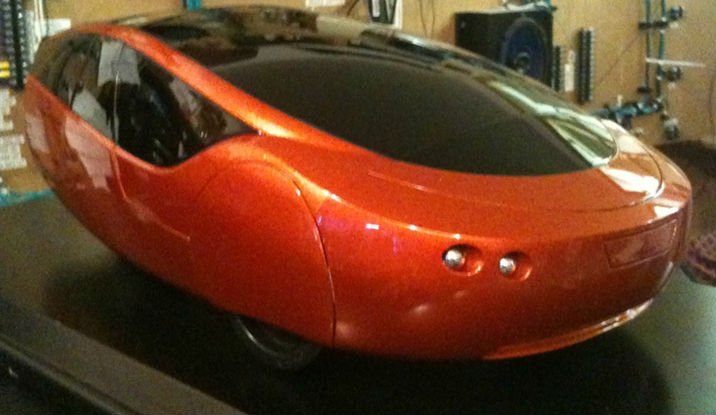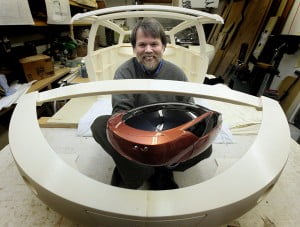It might just be the precursor to the next industrial revolution and slowly but surely, 3D printing is expanding its presence into the realm of manufacturing. Now it seems that one of the first major industries to benefit from 3D printing is the same one that spawned the assembly line revolution – the automotive industry.
Israeli company Stratasys, already a major player in the field and its subsidiary, RedEye On Demand, will be part of a project aimed at putting the first 3D printed car on the roads within two years, in partnership with KOR EcoLogic.
- Israeli Company Puts Old Tires Back On The Road – As Asphalt
- Tiny Electric Car Pilot To Debut In Israeli Town
“A future where 3D printers build cars may not be far off after all,” says Jim Bartel, VP of Stratasys and RedEye On Demand. “Jim Kor and his team at KOR EcoLogic had a vision for a more fuel-efficient car that would change how the world approaches manufacturing and today we’re achieving it. URBEE 2, the name of the car, shows the manufacturing world that anything really is possible. There are few design challenges [3D printing] capabilities can’t solve.”
A car built from 40 pieces
KOR EcoLogic will be in charge of the design end, building every inch of the car using computer aided design software. The design will then be turned into reality using RedEye On Demand and Stratasys printers. While standard cars have hundreds or even thousands of small parts, the URBEE 2 will be built using only 40 extremely complex interlocking pieces, made possible by 3D printing.
Sign up for our free weekly newsletter
SubscribeThe material used to build the car will be a strong but lightweight plastic and the two-passenger vehicle will be able to travel at speeds of up to 70mph (112kmh). According to Bartel, the car will also be highly fuel efficient. To prove it, Bartel explains, his team will try to set a world record by traveling in the car from San Francisco to New York City on only 10 gallons of fuel (37.8 liters).
“As a mechanical engineer, I’ve always believed we could use technology to help us solve some of society’s greatest challenges, like minimizing our dependence on oil and reducing ozone emissions,” says Jim Kor, president and senior designer for Winnipeg-based KOR EcoLogic.
He adds: “How cool is it that American manufacturing can evolve to tackle these challenges head-on? Our team is excited to launch URBEE 2, putting a next-generation vehicle on the road that will eventually be sold to the public.”
[youtuber youtube=’http://www.youtube.com/watch?v=FOh_m9pPvDo’]
URBEE 2 was preceded by URBEE 1, a prototype built entirely using 3D printing in 2011. While serving as proof to 3D printing’s potential, the car had no side mirrors or windshield wipers – both of which will be included in its updated version.
“With the Urbee 1 project, I learned that product design is nearly unencumbered by considerations on how parts can be made with digital manufacturing. That liberation is incredibly powerful and holds a lot of potential for the future of manufacturing,” says Kor.
Photos: courtesy
Related posts

Editors’ & Readers’ Choice: 10 Favorite NoCamels Articles

Forward Facing: What Does The Future Hold For Israeli High-Tech?

Impact Innovation: Israeli Startups That Could Shape Our Future





Facebook comments